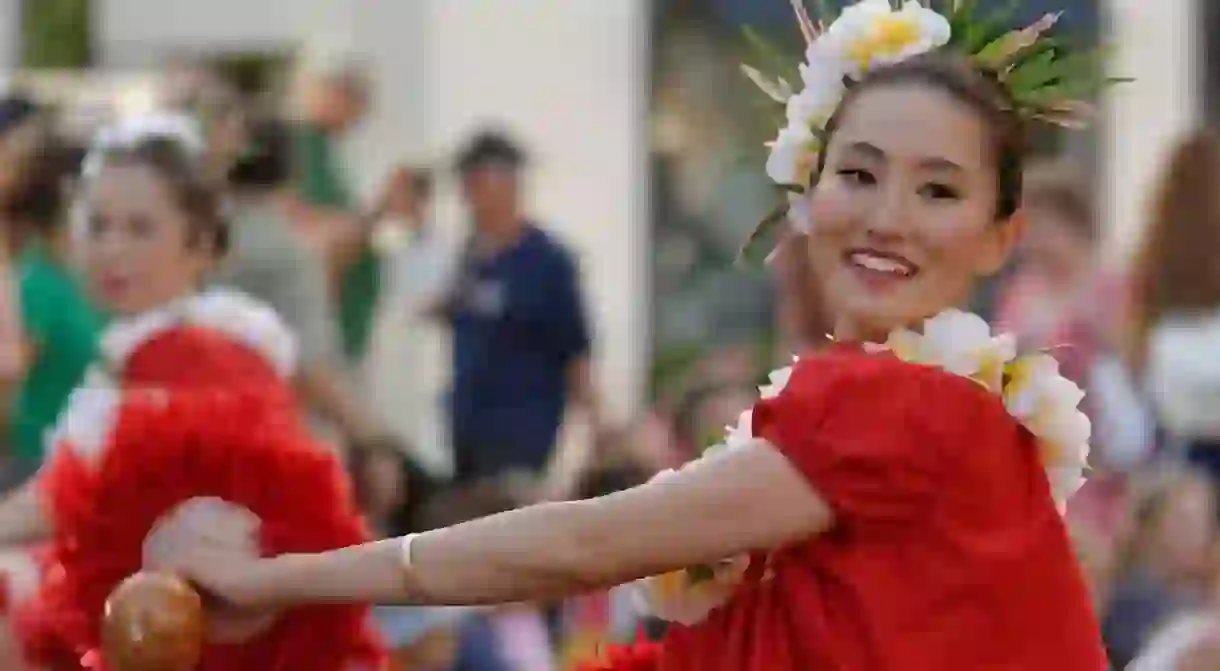5 Hawaiian Hula Implements Worth Knowing

The art of hula is one of the most well-known aspects of Hawaiian culture. And most visitors to the islands will see at least one performance during their stay.
Usually, onlookers focus on the flowing skirts or flower-adorned hair of the dancers but never stop to think about the traditional hula implements they are using. Hula tells a story, and each element, including the use of implements, help to visually express a specific tale. Here we break down the most popular hula practices, accessories, and tools.
Pūʻili
If you’ve ever walked through a dense bamboo forest, you may recognize the sound of the pūʻili. Pieces of dried bamboo are cut into strips, leaving room for a handle, to create a distinctive rattling sound when hit. Pūʻili are always used in pairs, and dancers tap them against one another or their shoulders, arms, and the floor.
https://www.instagram.com/p/BgIREnVjxUC/?tagged=hulaimplements
Ipu
Used by dancers, musicians, and chanters, the ipu is the most common hula implement. These calabash gourds are dried and emptied and then sanded inside and out before a final braided wrist strap is added. Musicians typically use an ipu heke (double gourd) as an accompaniment in a hula performance, while dancers will often use the single smaller gourd called an ipu heke ʻole.
https://www.instagram.com/p/BhNEmZtBM9J/?taken-by=merriemonarchfestival
ʻUlīʻulī
ʻUlīʻulī are one of the most beautiful Hawaiian instruments. Small gourds are filled with shells, seeds, or pebbles to create the rattle and then are decorated with kapa (traditional cloth) and adorned with colorful feathers—usually red and yellow, the colors of Hawaiian royalty.
https://www.instagram.com/p/Bg4c9BHhWDG/?taken-by=merriemonarchfestival
ʻIliʻili
Smooth volcanic stones from the river are used by hula dancers in a fashion similar to castanets—typical of Spanish flamenco dancers. Using ʻiliʻili take quite a bit of practice since unlike castanets, there is nothing attaching the rocks to one another or the hand. Therefore, they can easily slip.
https://www.instagram.com/p/Bg4nTdFhWJV/?taken-by=merriemonarchfestival
Kālaʻau
These simple wooden sticks help to coordinate dancers and chanters by producing a dry clicking sound. Hula dancers will have two identical hardwood sticks, one in each hand, and hit them together or on the floor while sitting, kneeling, or standing.
https://www.instagram.com/p/BhPLAZGjcDl/?taken-by=thehulaworld













